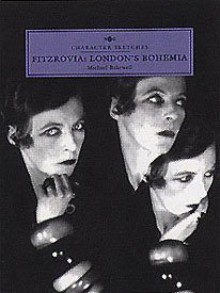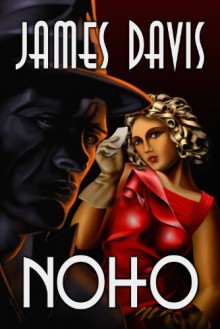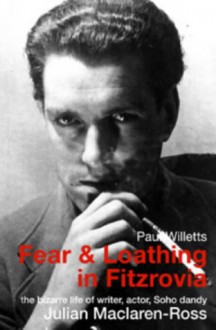
I visited The Wheatsheaf as part of my walking and drinking tour of Fitzrovia that took place on Saturday 19 October 2013. Click here to see the photos I took. We tried to evoke the spirit of Julian Maclaren-Ross and Patrick Hamilton, amongst others.
This is the exact spot where Julian Maclaren-Ross held court for so many years in The Wheatsheaf pub...

One of the great services Julian Maclaren-Ross renders in his best-known book,Memoirs of the Forties, is to grant life to occupants of his world beyond the numerous noted writers and artists of his acquaintance. So along with Dylan Thomas, Cyril Connolly and Graham Greene, he lends forgotten characters a substance and complexity which elevate them from bit-player status. His sense of colour, back story and telling details are all illustrated in this excerpt, in which describes one of his fellow regulars at the The Wheatsheaf:
Curtain-up on the evening was signalled by the arrival on the dot of six of Mrs Stewart, who lived on her old-age pension in one of the tenements at the foot of the alley and was collected by her married daughter towards closing time or when the pub became too noisy. Mrs Stewart was a very small elderly lady dressed in black silk with yellow-white hair and she arrived always carrying two evening papers in which to do the crossword and an alarm-clock to time herself by. She always drank bottled Guinness and having assembled her alarm clock, evening papers, spectacle case, purse, and other properties on the table, sat in front of them on a leather-covered bench which ran along the right-hand wall by the corner of the bar.
It was in this corner, propped up against the wooden partition of the seat, that I stood for many years (though not, as has been said, underneath my own tartan), having displaced from this strategic position a Central European sports writer on a daily picture paper by the simple expedient of arriving each evening earlier than he was able to.
The sports writer was furious and hated me virulently because of this, since for years before my arrival on the scene he’d been able to lean there, wearing a brown porkpie hat and camel hair coat of inferior quality, speaking to few but hoping always that tourists would say: ‘Who is that interesting-looking foreign man over there?’ as he struck a Napoleonic pose and stared superciliously ahead with his pouched eyes through the smoke of a nonchalantly puffed-at cigarette.
Having permanently dislodged him however (for if prevented by business from getting there in time, I would have someone else to hold the corner), it became my duty in turn to keep Mrs Stewart’s place, to pass over the Guinness in exchange for the exact money produced from her purse, and to see that well-intentioned idiots did not try to help her with the crosswords, a thing she hated above all. Great care had to be exercised in offering her a drink, it could only be done by split-second timing when her nightly ration was running low, but she was very proud and from certain people who plonked down heartily before her an open bottle, with the words ‘Have that one on me Ma,’ she would not accept anything at all.
She was spiky and occasionally irascible. Happily she approved of me, but Dylan Thomas and the poetess Anna Wickham she could not stand at any price. Red and Frances shared, originally, her dislike of Dylan, Mona to a lesser extent (luckily, or he wouldn’t have been allowed in), but later when he had begun to broadcast they chanced to hear him on the radio and from then on nothing was too good. Mrs Stewart either didn’t own a set or was perhaps too deaf, for her opinion of Dylan always remained unchanged, despite the attempts of Red and Frances to win her over to what was now their side.
And yet she was no stranger to people of this sort. In Paris as a young woman she lived in Montparnasse where she’d known Pascin, Hemingway and Joyce, also Dennis Corrigan who’d once been my uncle’s partner on the Côte and later hanged himself with his necktie in a prison cell awaiting trial (a paperback thriller called Hangman’s Tie was found lying below the bench from which he’d kicked off).
Corrigan Mrs Stewart had mainly met on the racecourse, but her encounters with the painters and writers had been in the Paris cafés and her stories about them always ended with her saying: ‘And there they were my dear, staggering about just like you and the rest of the young fellows are doing today.’
She was unlike the other old ladies in that she never spoke of the past from a personal angle, so nobody was told what she herself had been doing in Paris at this period. Nina Hamnett, who was better at painting old people than she was with the young, did a superb portrait of her, which for some time after she died hung above the spot where for so long she’d sat, though I don’t know what happened to it in the end.
The death of Mrs Stewart – in the late Forties or early Fifties – marked, as writers of memoirs are fond of saying, the passing of an epoch, and it might have pleased her to know that she’d become a symbolic figure to a whole new generation now no longer young: for there are few former Wheatsheaf habitués whose eyes fail to light up in memory of her name.
Julian Maclaren-Ross and Mrs Stewart's spot in The Wheatsheaf...

It was emotional.

 Log in with Facebook
Log in with Facebook 













